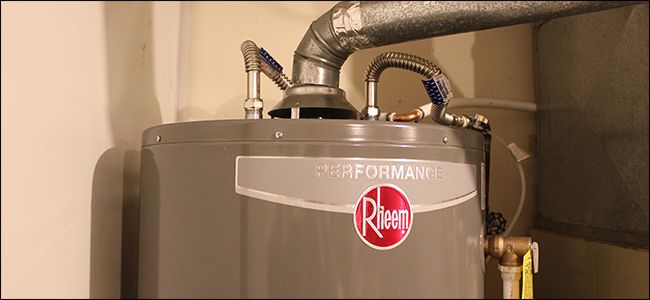The writer is making a number of great points about How to Maintain a Hot Water Heater in a Few Simple Steps as a whole in this article beneath.

Hot water is essential for everyday convenience, whether it's for a refreshing shower or washing dishes. To guarantee your warm water system runs effectively and lasts longer, routine maintenance is essential. This article provides sensible pointers and understandings on exactly how to preserve your home's hot water system to avoid disruptions and pricey repair services.
Intro
Preserving your home's hot water system might appear overwhelming, however with a few easy actions, you can guarantee it operates smoothly for several years ahead. This overview covers everything from recognizing your warm water system to DIY maintenance pointers and recognizing when to contact professional help.
Relevance of Maintaining Your Warm Water System
Routine upkeep not only extends the life-span of your warm water system but additionally guarantees it operates efficiently. Ignoring maintenance can lead to lowered effectiveness, higher power expenses, and also early failure of the system.
Indicators Your Hot Water System Needs Upkeep
Understanding when your warm water system requires attention can protect against major issues. Watch out for signs such as inconsistent water temperature level, odd noises from the heating system, or rusty water.
Purging the Water Heater
Purging your water heater gets rid of debris buildup, enhancing efficiency and lengthening its life.
Checking and Changing Anode Rods
Anode rods protect against corrosion inside the storage tank. Evaluating and replacing them when broken is important.
Facility Problems Calling For Expert Aid
Examples include major leakages, electrical troubles, or if your water heater is consistently underperforming.
Regular Professional Maintenance Conveniences
Professional upkeep can include complete inspections, tune-ups, and making sure conformity with safety requirements.
Inspecting and Changing Temperature Setups
Adjusting the temperature level settings makes sure optimal efficiency and safety.
Do It Yourself Tips for Maintenance
You can do several upkeep jobs yourself to maintain your hot water system in top problem.
Checking for Leakages
Routinely check pipes and links for leakages, as these can result in water damages and higher expenses.
Understanding Your Hot Water System
Before diving into maintenance jobs, it's valuable to understand the standard elements of your warm water system. Usually, this consists of the water heater itself, pipelines, anode rods, and temperature level controls.
Regular Monthly Upkeep Tasks
Routine month-to-month checks can assist capture minor problems prior to they intensify.
Examining Pressure Alleviation Valves
Evaluating the stress relief valve guarantees it operates properly and protects against extreme stress build-up.
Protecting Pipelines
Insulating warm water pipelines decreases warmth loss and can save power.
When to Call a Specialist
While DIY upkeep is advantageous, some concerns require expert proficiency.
Verdict
Regular upkeep of your home's warm water system is important for effectiveness, long life, and cost financial savings. By adhering to these suggestions and knowing when to seek specialist help, you can guarantee a trustworthy supply of warm water without unanticipated disruptions.
How to Maintain an Instant Hot Water Heater
Before tinkering with your hot water heater, make sure that it’s not powered on. You also have to turn off the main circuit breaker and shut off the main gas line to prevent accidents. Also turn off the water valves connected to your unit to prevent water from flowing into and out of the appliance. 2. When you’re done, you have to detach the purge valves’ caps. These look like the letter “T” and are situated on either side of the water valves. Doing so will release any pressure that has accumulated inside the valves while at the same time avoid hot water from shooting out and burning your skin. 3. When the purge valves’ caps are removed, you have to connect your hosing lines to the valves. Your unit should have come with three hoses but if it didn’t, you can purchase these things from any hardware or home repair shops. You can also get them from retail stores that sell water heating systems. Read the user’s manual and follow it to complete this task properly. When the hosing lines are connected, open the purge port’s valves. 4. You should never use harsh chemical cleaners or solutions when cleaning your unit. Make use of white vinegar instead. It should be undiluted and you’ll probably use about 2 gallons. 5. Now flush your water heater. This task should probably take about 40 minutes. We can’t give you specific directions for this because the procedure is carried out depending on the type, model and brand of your heater. With that being said, refer to the user’s manual. 6. When you’re done draining the unit, you have to turn off the purge port valves again. Remove the hosing lines that you earlier installed on each of the water valves. Put the valve caps (purge port) back in their respective places and be very careful so as not to damage the rubber discs that are found inside these caps. 7. Now that everything’s back in place, check your user’s manual again to find out how to reactivate your water heating system. 8. Once it is working, turn one of your hot water faucets on just to let air pass through the heater’s water supply pipes. Leave the tap on until water flows smoothly out of it. https://www.orrplumbing.com/blog/2014/september/how-to-maintain-an-instant-hot-water-heater/

We were introduced to that article about Tips For Maintaining Your Hot Water Heater from a good friend on a different website. You should set aside a second to share this blog if you enjoyed reading it. We truly appreciate reading our article about Tips on Maintaining a Water Heater.
Contact Us Today